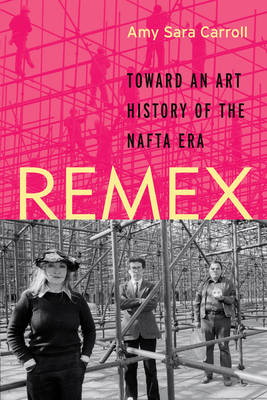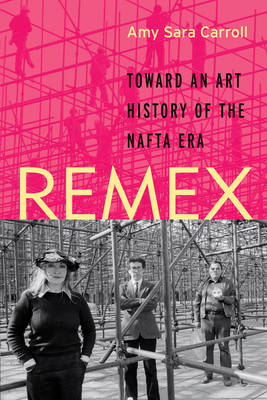
- Retrait gratuit dans votre magasin Club
- 7.000.000 titres dans notre catalogue
- Payer en toute sécurité
- Toujours un magasin près de chez vous
- Retrait gratuit dans votre magasin Club
- 7.000.0000 titres dans notre catalogue
- Payer en toute sécurité
- Toujours un magasin près de chez vous
Description
REMEX presents the first comprehensive examination of artistic responses and contributions to an era defined by the North American Free Trade Agreement (1994-2008). Marshaling over a decade's worth of archival research, interviews, and participant observation in Mexico City and the Mexico-US borderlands, Amy Sara Carroll considers individual and collective art practices, recasting NAFTA as the most fantastical inter-American allegory of the turn of the millennium. Carroll organizes her interpretations of performance, installation, documentary film, built environment, and body, conceptual, and Internet art around three key coordinates--City, Woman, and Border. She links the rise of 1990s Mexico City art in the global market to the period's consolidation of Mexico-US border art as a genre. She then interrupts this transnational art history with a sustained analysis of chilanga and Chicana artists' remapping of the figure of Mexico as Woman.
A tour de force that depicts a feedback loop of art and public policy--what Carroll terms the "allegorical performative"--REMEX adds context to the long-term effects of the post-1968 intersection of D.F. performance and conceptualism, centralizes women artists' embodied critiques of national and global master narratives, and tracks post-1984 border art's "undocumentation" of racialized and sexualized reconfigurations of North American labor pools. The book's featured artwork becomes the lens through which Carroll rereads a range of events and phenomenon from California's Proposition 187 to Zapatismo, US immigration policy, 9/11 (1973/2001), femicide in Ciudad Juárez, and Mexico's war on drugs.
Spécifications
Parties prenantes
- Auteur(s) :
- Editeur:
Contenu
- Nombre de pages :
- 416
- Langue:
- Anglais
Caractéristiques
- EAN:
- 9781477310649
- Date de parution :
- 13-12-17
- Format:
- Livre relié
- Format numérique:
- Genaaid
- Dimensions :
- 163 mm x 234 mm
- Poids :
- 857 g

Les avis
Nous publions uniquement les avis qui respectent les conditions requises. Consultez nos conditions pour les avis.






